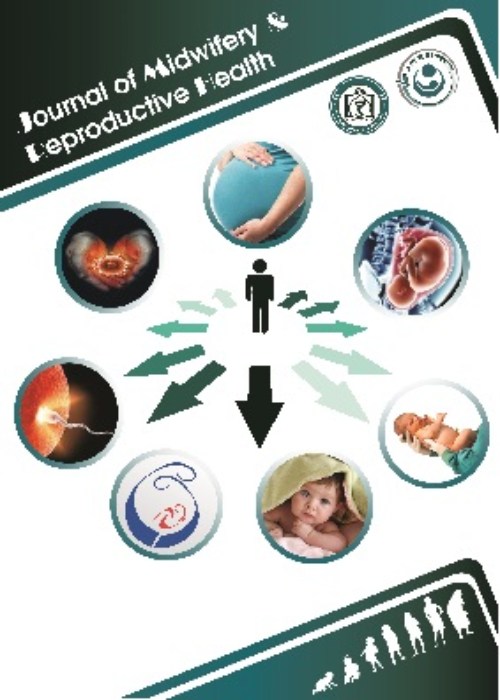The Possibility of Covid-19 Vertical Transmission: Could it be Excluded?
Currently, the novel coronavirus disease (COVID-19) outbreak is considered as a global public health emergency by the World Health Organization. This emerging contagious disease spreads through infected respiratory droplets and could create clinical symptoms including cough, fever and shortness of breath, which can results in ARDS, pneumonia, as well as multi-organ failure (1). Pregnant women are among special groups in this outbreak, which deserve more attention due to the physiological and immunological changes during pregnancy that put them at greater risk and more susceptibility to morbidity and mortality of COVID-19. So there is considerable concern about the effects of COVID-19 on pregnancy as well as the fetus or newborn (2). However, there is not good enough evidence to prove the vertical intrauterine transmission of COVID-19 from infected pregnant women to their fetuses (1, 2, 3).Some argues thatalthoughvertical transmission has not been proven, but the likelihood of transmission cannot be excluded. Expert opinions suggest that it is unlikely that the fetus to be exposed during pregnancy (4). So there is a controversy towards the intrauterine transmission of the virus from infected mother to her infant before birth (5). The other important issue that should be bear in mind is that the criteria for diagnosis of vertical transmission of COVID-19 are unclear. Different methods including assessing IgM level for the virus in the cord blood, amnion-chorion interface, placental tissue immediately after birth and sampling the neonatal nasopharynx and amniotic fluid obtained at caesarean delivery have been suggested (6). Nevertheless, the topic has been addressed in many case reports, case series as well as systematic reviews throughout the world and still is under investigation. A case series of nine pregnant women published by Chen et al (2020) tested amniotic fluid, cord blood, neonatal throat swabs and breast milk samples from COVID-19 infected mothers and all samples tested negative for the virus (7). Furthermore, in a different paper by Chen et al, three placentas of infected mothers were swabbed and tested negative for the virus(8). However, the first case report of a possible vertical transmission of Covid19 infection, questioned the absence of transplacental transmission of COVID-19. In this case report, which was published in the Journal of American Medical Academy (JAMA), elevated IgM antibodies to SARS-CoV-2 in a neonate born to a mother with COVID-19, was reported (5).In another case report of a patient with confirmed COVID-19 who had second-trimester miscarriage, the sample taken from a placental cotyledon and sub membrane were positive for COVID-19; although in this case fetal, cord and maternal blood as well as amniotic fluid and vaginal sample, all were negative (9). In a case series of 6 pregnant women infected with COVID-19 in the third trimester, the virus was not detected in neonates’ nasopharyngeal swab or serum sample at birth. However, two newborns had increased levels of IgM for COVID-19. Also there were elevated levels of IL-6 in all 6 newborns. No other product of conception was tested (10). In another report including five studies (n = 16 pregnant women infected with COVID-19 patients), all from China concluded that no definitive evidence of intrauterine vertical transmission of COVID-19 in pregnant women diagnosed in the third trimester (11).In a systematic review, which was conducted on nine published articles between 1st January and 31st March 2020, it was reported that out of 70 newborns of mothers with proved COVID-19 infection, 65 neonates (92.9%) from seven independent studies was negative for a trans placental infection based on oropharyngeal or nasopharyngeal swab accomplished in the first hours or days of life. Four neonates (5.7%) had early infection detected at second days of life. Only one neonate had a negative throat swab but positive IgM and IgG count, which could probably, shows intrauterine infection (12). Conclusion In conclusion, the extent of vertical transmission has yet remained unclear. One of the best documented cases, which demonstrate a possible congenital SARS-CoV-2 infection, is a newborn delivered at 35+5 weeks by planned cesarean section due to deteriorating maternal COVID-19. There was no evidence of neonate contact with vaginal secretions. Also the membranes were intact before birth and there was no mother-infant skin-to-skin contact in this case (13). Nevertheless, there is a debate that the risk of vertical transmission of COVID-19 might also be as low as that of SARS-CoV-1 (14). To date, the possibility of intrauterine infection has been based mainly on the detection of IgM and IL-6 in the serum of neonates (15) and these are not definitive evidence of intrauterine infection, as in many of these cases, early infant infection may have been because of postnatal contact with infected parents or caregivers (16). It is noteworthy that so far, COVID-19 has not been detected in cord blood or amniotic fluid (6). Additional studies are required to show whether in fact vertical transmission could be a possible way of coronavirus transmission from infected mother to the fetus and neonate.
- حق عضویت دریافتی صرف حمایت از نشریات عضو و نگهداری، تکمیل و توسعه مگیران میشود.
- پرداخت حق اشتراک و دانلود مقالات اجازه بازنشر آن در سایر رسانههای چاپی و دیجیتال را به کاربر نمیدهد.


